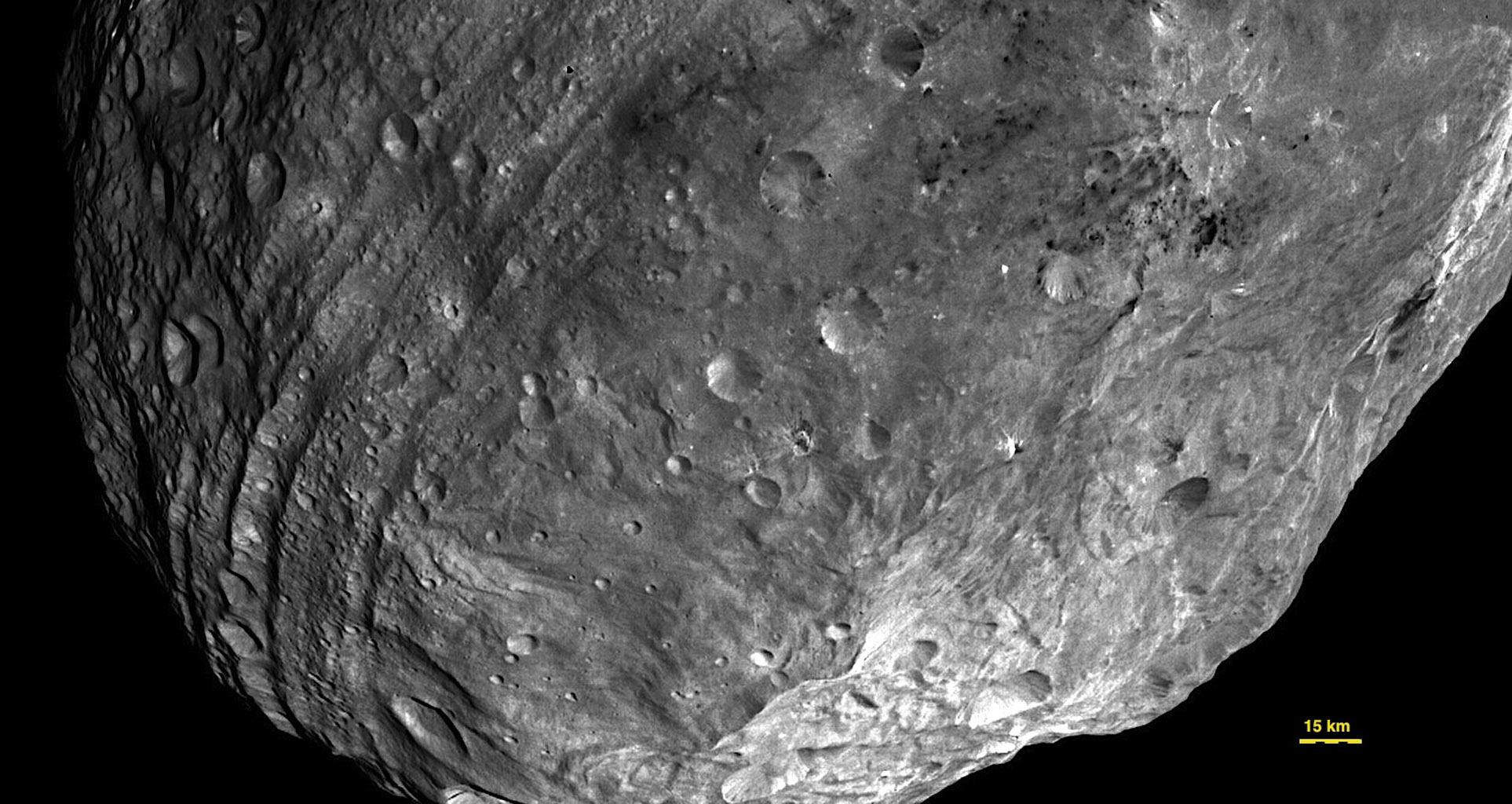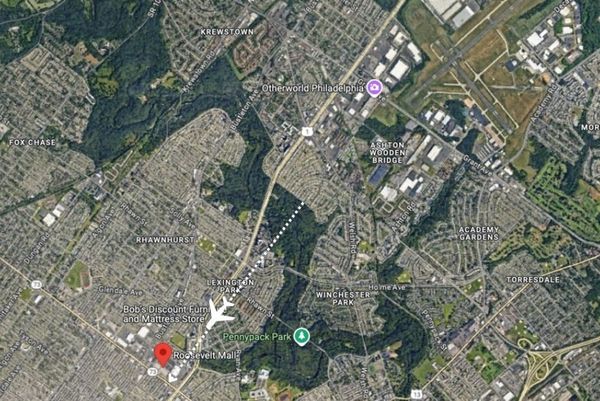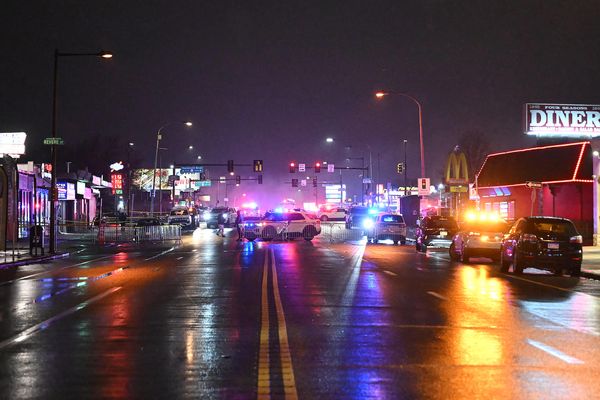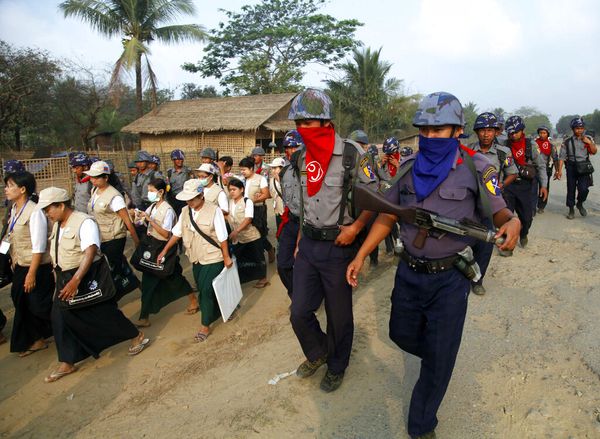
Vesta has a rocky history. For the second-largest object in the asteroid belt, the evidence of its tumultuous past is in two giant scars on the surface of the world.
“It got hit by something pretty big that sort of took out parts of the southern polar region,” astronomer Peter Jenniskens tells Inverse. “And there are two big impact basins there — one sits on top of the other.” Jenniskens is a senior research scientist at the SETI Institute — a scientific organization that searches the cosmos for extraterrestrial life.
The violence written into Vesta’s surface forged the asteroid belt we know today, now a scattered band of debris and fragmented worlds in the middle of our solar system. But the belt was once made up of larger rocky bodies called protoplanets — small building blocks of larger worlds. The early unforgiving solar system smashed most of these potential planets to pieces, forming the asteroids we see today.
Vesta was once such a protoplanet too, giving birth to an entire family of asteroids within the belt. Some fragments of Vesta have since left the belt’s confines, however.
In 2018, one of the small, wandering chunks of Vesta hurtled into Earth’s atmosphere as a fireball, breaking into pieces over a large game reserve in Botswana. That little piece could give us massive insight into the mechanics at work in the early solar system.
Jenniskens and his colleagues detail how they tracked the meteorite down and traced its origin story in a study published April 23 in Meteoritics & Planetary Science.
WHAT’S NEW — Unlike Ceres, a surviving protoplanet in the asteroid belt that has been largely untouched since the solar system’s earliest days, Vesta carries a record of two giant impacts, probably from the bumper-cars era of the solar system that spawned the asteroid belt.
It’s difficult to say exactly when these giant impacts occurred. Researchers typically date a crater by counting the smaller craters that have formed on its surface and estimating how long it would take to accumulate those newer craters. The meteorite that landed in Botswana, dubbed by researchers Motopi Pan, gives a look back in time at when these violent collisions took place. Jenniskens and his team found that the Motopi Pan meteorite is a survivor of the two giant impacts on Vesta.
“This rock experienced one of the most dramatic heating events known for this type of meteorite,” Jenniskens says.
Their investigation reveals that the first of the two giant impacts happened about 4.23 billion years ago. The second giant impact likely happened roughly 3.5 billion years ago. Much later, the Motopi Pan rock itself broke off Vesta in a small collision only about 23 million years ago that possibly formed the Rubria crater (a smaller crater near the two giant basins).
WHY IT MATTERS — Even if researchers can identify the solar system object a meteorite is from, like the Moon or Mars, it’s rare to be able to pinpoint where on those bodies the meteorite material came from.
Comparing the Motopi Pan meteorite with another meteorite from Vesta, called Sariçiçek, which was found in Turkey in 2015, let the researchers unravel the different histories that rocks on different parts of Vesta must have experienced. The Sariçiçek rock had been through only one of the two heating events that Motopi Pan experienced, giving clues to where on Vesta these rocks originated.
HERE’S THE BACKGROUND — NASA’s Dawn mission gave us a close look at Vesta, letting researchers learn a lot about the asteroid’s composition and potential history. For example, the spacecraft found evidence that the asteroid probably has ice on parts of its surface.
Dawn also gave evidence that Vesta has a distinct core and crust — hints of its past as a protoplanet, even though it’s not spherical like its cousin Ceres, the sole dwarf planet in the inner solar system.
The reason it’s not spherical may be due to these large impacts as well as other, smaller ones. Tracing the impact history of Vesta helps build a better view of what the early solar system was like — violent collisions and all.
HOW THEY DID IT — In June 2018, the Catalina Sky Survey, which monitors the skies for asteroids, spotted a small one, dubbed 2018 LA, that was on track to collide with Earth within hours. Follow-up analyses revealed that the space rock probably came from Vesta, and it entered Earth’s atmosphere as a brilliant fireball over Botswana.
When the asteroid fell, Jenniskens teamed up with local researchers, including those at the University of Botswana and the Botswana Geoscience Institute, to track down security camera footage of the fireball, triangulate where it broke up into pieces, and get access to search the wild game reserve where the fireball fell to Earth. The team eventually found 23 pieces of the meteorite.
The team analyzed the chemical compositions of the meteorite to confirm that it came from Vesta. Further, they discovered it had experienced two major heating events, and calculated how long it had been since the giant impacts that heated the rock. They also measured the presence of certain chemical isotopes to estimate how recently the rock was blown off Vesta, which led them to pinpoint the crater Rubria as the potential source of this meteorite.
WHAT’S NEXT — Asteroids continue to collide and distribute debris around the solar system to this day. Researchers like Jenniskens continue to watch for any such objects that might hit Earth, both potentially dangerous impacts and benign, future meteorites with clues to more of the solar system’s history.
“We're trying to understand from what areas in the asteroid belt we are getting our meteorites — that's a really big question,” Jenniskens says. “It’s very cool that with this meteorite, we can actually pinpoint the impact crater. One day, we could visit the crater and study it.”
Abstract: The June 2, 2018 impact of asteroid 2018 LA over Botswana is only the second asteroid detected in space prior to impacting over land. Here, we report on the successful recovery of meteorites. Additional astrometric data refine the approach orbit and define the spin period and shape of the asteroid. Video observations of the fireball constrain the asteroid's position in its orbit and were used to triangulate the location of the fireball's main flare over the Central Kalahari Game Reserve. Twenty‐three meteorites were recovered. A consortium study of eight of these classifies Motopi Pan as an HED polymict breccia derived from howardite, cumulate and basaltic eucrite, and diogenite lithologies. Before impact, 2018 LA was a solid rock of ~156 cm diameter with high bulk density ~2.85 g cm−3, a relatively low albedo pV ~ 0.25, no significant opposition effect on the asteroid brightness, and an impact kinetic energy of ~0.2 kt. The orbit of 2018 LA is consistent with an origin at Vesta (or its Vestoids) and delivery into an Earth‐impacting orbit via the ν6 resonance. The impact that ejected 2018 LA in an orbit toward Earth occurred 22.8 ± 3.8 Ma ago. Zircons record a concordant U‐Pb age of 4563 ± 11 Ma and a consistent 207Pb/206Pb age of 4563 ± 6 Ma. A much younger Pb‐Pb phosphate resetting age of 4234 ± 41 Ma was found. From this impact chronology, we discuss what is the possible source crater of Motopi Pan and the age of Vesta's Veneneia impact basin.







